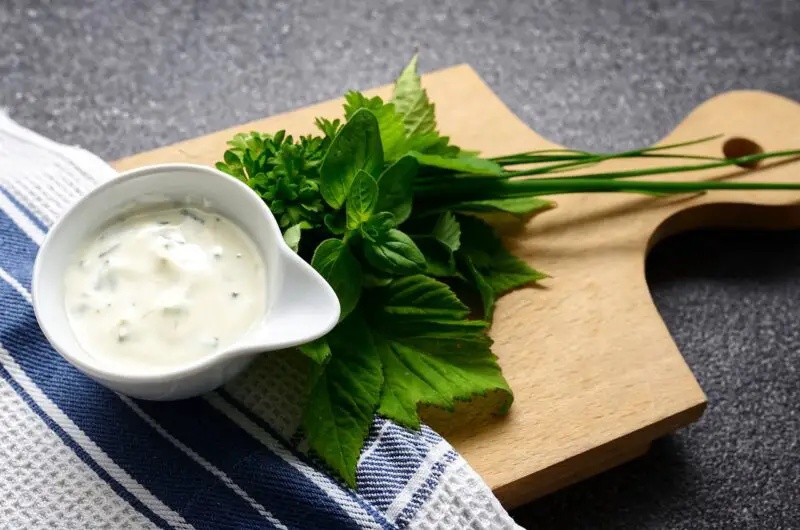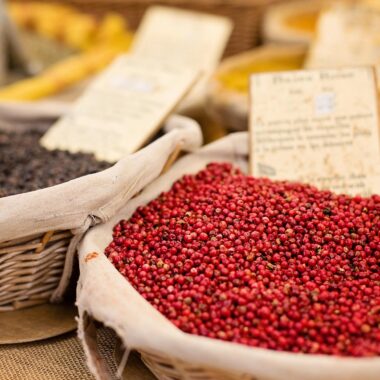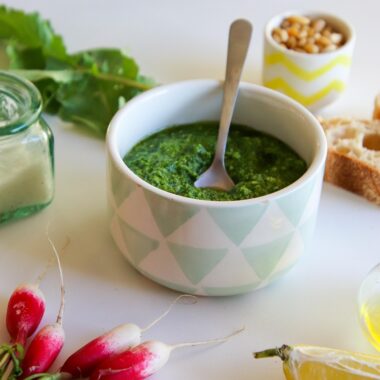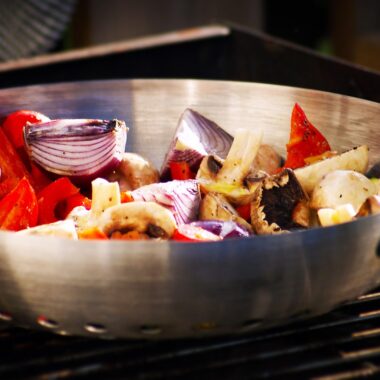Emulsions are the unsung heroes of the culinary world. From the creamy tang of a Caesar dressing to the velvety richness of a hollandaise sauce, emulsions bring texture, flavor, and harmony to countless dishes. But despite their ubiquity, creating a perfect emulsion can feel like a culinary high-wire act—one wrong move, and your mixture “breaks,” leaving you with a greasy, separated mess. Fear not! With the right techniques, tools, and understanding, anyone can master the art of emulsification. In this guide, we’ll explore what emulsions are, why they matter, and how to make them flawlessly every time for dressings and sauces.
What Is an Emulsion?
At its core, an emulsion is a mixture of two liquids that don’t naturally combine—typically oil and water (or water-based liquids like vinegar or lemon juice). In the kitchen, emulsions are created when these two opposing forces are persuaded to coexist, thanks to mechanical action (whisking, blending) and an emulsifier, a magical ingredient that acts like a peacemaker between oil and water.
There are two main types of emulsions in cooking:
- Oil-in-water emulsions: Tiny droplets of oil are dispersed in a water-based liquid. Think vinaigrettes, mayonnaise, or creamy salad dressings.
- Water-in-oil emulsions: Tiny droplets of water are suspended in oil. Butter and certain sauces like beurre blanc fall into this category.
For dressings and sauces, we’re most often dealing with oil-in-water emulsions, where oil is gradually incorporated into a water-based mixture to create a smooth, cohesive result. The challenge lies in keeping those oil droplets small, evenly distributed, and stable. That’s where technique comes in.
Why Emulsions Matter in Dressings and Sauces
A well-made emulsion transforms a dish. Imagine a vinaigrette: without emulsification, you’d have a puddle of vinegar sitting beneath a slick of oil—unappetizing and uneven in flavor. Emulsify it properly, and you get a glossy, unified dressing that clings to your greens and delivers a balanced bite every time. Similarly, sauces like hollandaise or aioli rely on emulsification for their luxurious mouthfeel. A broken emulsion doesn’t just look bad; it tastes off, lacks body, and fails to deliver the intended experience.
Mastering emulsions also opens up a world of creativity. Once you understand the principles, you can tweak ratios, swap ingredients, and invent your own signature dressings and sauces. But first, let’s nail the basics.
The Science Behind Emulsions
To make a perfect emulsion, it helps to know what’s happening at a molecular level. Oil and water repel each other because oil is nonpolar (its molecules don’t carry a charge), while water is polar (its molecules do). Left alone, they’ll separate faster than a bad blind date. Enter the emulsifier: a substance with both polar and nonpolar properties that bridges the gap between oil and water.
Common emulsifiers in the kitchen include:
- Mustard: A vinaigrette MVP, mustard contains mucilage, a natural emulsifier, and adds flavor.
- Egg yolk: Packed with lecithin, egg yolks are the backbone of mayonnaise, hollandaise, and aioli.
- Honey: Its stickiness and slight emulsifying properties make it a subtle helper in dressings.
- Garlic or herbs: When mashed into a paste, they can assist in stabilizing emulsions while boosting taste.
Mechanical action—whisking, blending, or shaking—breaks the oil into tiny droplets and disperses them into the water phase. The emulsifier then coats those droplets, preventing them from clumping back together. The smaller the droplets, the more stable and creamy the emulsion. Too big, and it’ll break.
Tools of the Trade
You don’t need a fancy kitchen to make a great emulsion, but the right tools make the process easier:
- Whisk: A balloon whisk is perfect for small batches and gives you control.
- Blender or food processor: Ideal for larger volumes or ultra-smooth results (like mayonnaise).
- Immersion blender: A game-changer for sauces like hollandaise—quick and precise.
- Mason jar: For simple vinaigrettes, shaking works wonders.
- Measuring cups and spoons: Precision matters, especially with emulsifiers and liquids.
- Bowl: A wide, shallow bowl anchors your mixture and makes whisking easier.
Step-by-Step: Making the Perfect Emulsion
Now, let’s dive into the practical steps. Whether you’re crafting a zesty vinaigrette or a luscious hollandaise, the principles remain largely the same. We’ll break this into two sections: cold emulsions (like dressings) and warm emulsions (like sauces).
Cold Emulsions: Vinaigrettes and Dressings
Example Recipe: Classic Mustard Vinaigrette
- 1 tablespoon Dijon mustard (emulsifier)
- 2 tablespoons red wine vinegar (water phase)
- 6 tablespoons extra-virgin olive oil (oil phase)
- Salt and pepper to taste
- Optional: 1 teaspoon honey or minced garlic
Step 1: Start with the Base In a bowl or jar, combine your water-based ingredients (vinegar, lemon juice, etc.) with the emulsifier (mustard, honey, etc.). Whisk or shake until fully blended. This creates a cohesive foundation for the oil to join. Season lightly with salt and pepper—they enhance flavor and help the emulsion hold.
Step 2: Add Oil Gradually The key to a stable emulsion is patience. Drizzle the oil in slowly—a thin stream or even drop by drop at first—while whisking vigorously or shaking the jar. If using a blender, pour oil through the lid’s opening while the motor runs. Start slow; as the mixture thickens, you can add oil a bit faster.
Why slow? Adding oil too quickly overwhelms the emulsifier, leaving uncoated droplets that merge and separate. Slow incorporation keeps droplets tiny and evenly dispersed.
Step 3: Watch the Texture You’ll see the mixture transform. At first, it’s thin and watery; then it thickens and turns glossy. For a vinaigrette, stop when it’s cohesive but still pourable—over-emulsifying can make it too thick. Taste and adjust seasoning.
Step 4: Store or Serve Use immediately or store in an airtight container. Cold emulsions like vinaigrettes may separate over time (they’re temporary emulsions), so give them a shake or whisk before serving. Refrigerate for up to a week.
Pro Tip: If it breaks (oil pools on top), whisk in a teaspoon of warm water or more emulsifier to bring it back.
Warm Emulsions: Sauces like Hollandaise
Example Recipe: Basic Hollandaise
- 2 large egg yolks (emulsifier)
- 1 tablespoon lemon juice (water phase)
- 1/2 cup unsalted butter, melted and warm (oil phase)
- Salt and cayenne pepper to taste
Step 1: Prepare the Base In a heatproof bowl, whisk egg yolks and lemon juice until slightly thickened. Set the bowl over a double boiler (a pot with simmering water, not touching the bowl). The gentle heat cooks the yolks slowly, preventing scrambling while building the emulsion’s structure.
Step 2: Incorporate the Fat With the butter melted and warm (not hot—around 120°F/50°C is ideal), drizzle it into the yolk mixture a few drops at a time, whisking constantly. An immersion blender works wonders here, too—just keep it moving. The mixture will thicken as the butter emulsifies with the yolks.
Why warm? Heat stabilizes egg-based emulsions by gently cooking the proteins in the yolk, making them more effective at holding oil and water together.
Step 3: Monitor Consistency Aim for a sauce that’s thick enough to coat a spoon but still pourable. If it gets too thick, whisk in a teaspoon of warm water. If it’s too thin, add more butter slowly.
Step 4: Season and Serve Add salt and a pinch of cayenne for depth. Serve immediately—hollandaise doesn’t hold well long-term. If it breaks (looks curdled or oily), blend in a tablespoon of warm water or a fresh yolk to rescue it.
Pro Tip: Keep everything warm but not hot. Overheating (above 160°F/70°C) can cook the eggs too far, breaking the emulsion.
Troubleshooting Common Emulsion Problems
Even pros hit snags. Here’s how to fix them:
- Separation: Too much oil, too fast. Start over with a new base (e.g., mustard or yolk) and slowly whisk the broken mixture into it.
- Too Thick: Add a splash of water or vinegar/lemon juice to loosen it.
- Too Thin: Add more oil gradually or increase the emulsifier.
- Curdling (warm emulsions): Heat was too high. Cool it down and blend with a fresh yolk or water.
Creative Variations
Once you’ve got the basics, experiment!
- Dressings: Swap vinegar for citrus, use avocado oil, or add herbs like dill or basil.
- Sauces: Infuse butter with garlic or herbs, substitute lime for lemon, or blend in roasted peppers for a twist.
Final Tips for Emulsion Success
- Room Temperature Ingredients: Cold oil or eggs can resist emulsifying. Let them warm up slightly.
- Quality Matters: Fresh eggs, good oil, and vibrant acids (vinegar, citrus) elevate the result.
- Practice Patience: Rushing is the enemy of emulsions. Take your time.
- Taste as You Go: Adjust acidity, salt, and sweetness to suit your palate.
Conclusion
Making the perfect emulsion is less about magic and more about method. With an understanding of the science, the right tools, and a steady hand, you can whip up dressings and sauces that dazzle the senses. Whether it’s a simple vinaigrette to brighten a salad or a decadent hollandaise to crown your eggs Benedict, the power of emulsification is yours to wield. So grab a whisk, embrace the process, and transform your kitchen into a laboratory of flavor. The perfect emulsion awaits!


















